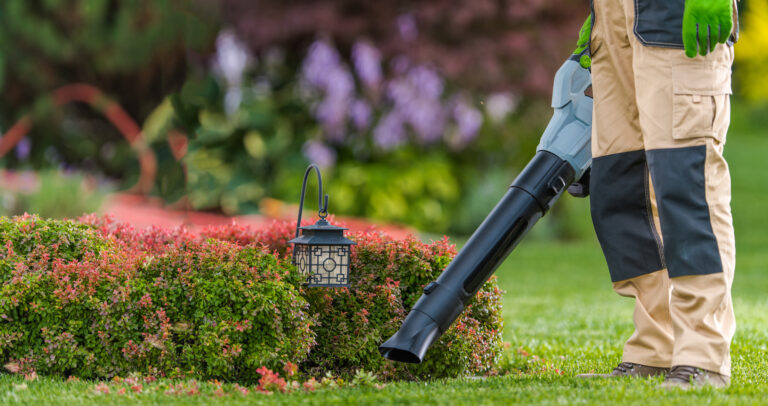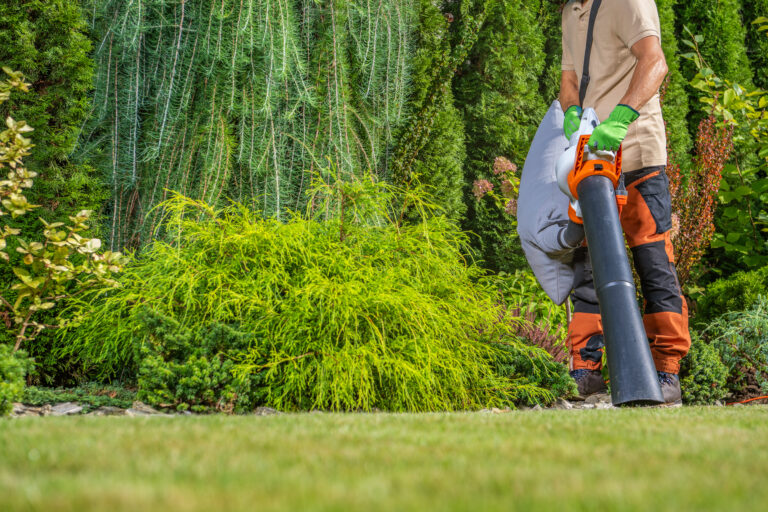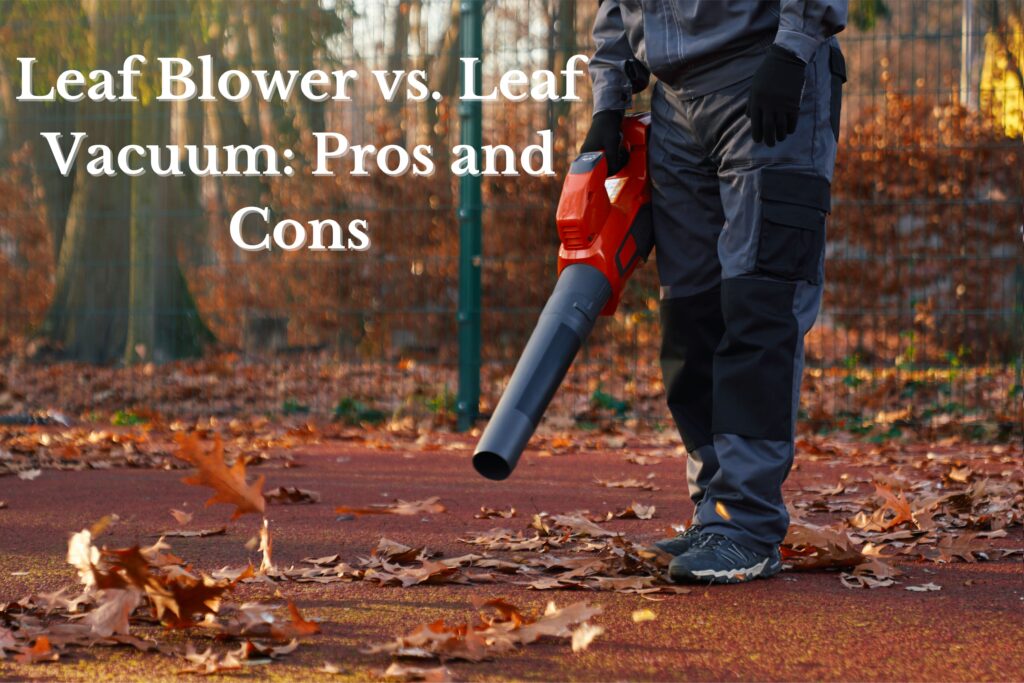Table of Contents
Leaf Blowers: Power, Speed, and Versatility

Pros
High-Speed Cleanup: Leaf blowers are among the most efficient tools for moving large volumes of leaves quickly. This makes them ideal for yards with a lot of trees and heavy foliage.
Multi-Purpose Tool: In addition to blowing leaves, many people use leaf blowers to clean off grass clippings, dust, and small twigs from patios, driveways, and sidewalks. Their versatility can save time when it comes to general outdoor cleaning.
Non-Contact Cleaning: With a leaf blower, you can move leaves without physically touching them, which can be a significant benefit if the leaves are wet, dirty, or have developed mold or allergens.
Range of Power Options: Leaf blowers come in various models, including gas-powered, electric, and battery-operated options. Each type has its own power level and advantages, allowing you to select a model based on yard size, leaf volume, and preferred fuel type.
Cons
Noise Pollution: Leaf blowers, especially gas-powered ones, are known for their loud operation, which can disturb neighbors and wildlife. Some cities have even introduced noise ordinances that restrict their use at certain times.
Environmental Concerns: Gas-powered blowers emit exhaust that contributes to air pollution. Battery-operated models are quieter and more eco-friendly, though they may lack the same power, while electric models require an outdoor power source.
Scattering of Debris: While powerful, leaf blowers may scatter leaves in unintended directions, particularly on windy days, leading to extra cleanup or causing leaves to blow into unwanted areas like flower beds or gardens.
Physical Demand: Leaf blowers, especially higher-powered ones, can be heavy or awkward to maneuver over extended periods, which may be tiring for some users.
Leaf Vacuums: Precision and Tidiness

Pros
Precise Collection: Leaf vacuums offer more control, as they collect leaves directly into a bag. This makes them excellent for targeted areas like flower beds, pathways, and patios where blowing leaves might spread debris.
Mulching Benefits: Many leaf vacuums come with built-in mulchers, which reduce leaves to smaller particles. This not only saves on bag space but also produces mulch that can be used to enrich garden soil, giving your yard a nutrient boost.
Convenient Leaf Disposal: By bagging leaves directly, leaf vacuums make it easier to gather and transport them to a compost bin or disposal area. The pre-collected leaves also simplify composting or disposal.
Lower Noise Levels: Leaf vacuums tend to operate more quietly than many leaf blowers, especially if they’re electric. This can be an advantage in noise-sensitive areas, making leaf vacuums a more neighborhood-friendly option.
Cons
Limited Coverage: Leaf vacuums are less effective at handling large quantities of leaves over expansive areas. They work best in targeted spaces with moderate leaf fall, rather than open lawns.
Frequent Bag Emptying: The collection bag on a leaf vacuum can fill up quickly, particularly in leaf-heavy areas, so you may find yourself stopping frequently to empty it—a potential inconvenience during larger tasks.
Difficulty with Wet Leaves: Leaf vacuums may struggle with damp or matted leaves, as suction power can be reduced with added moisture or weight. This can limit their usability in wet conditions.
Weight and Bulkiness: Some leaf vacuums are relatively bulky and may require more effort to carry, particularly over long periods, which could be uncomfortable for users needing extended use.
Which Tool is Right for You?
When choosing between a leaf blower and a leaf vacuum, consider the specific needs of your yard and your cleanup preferences:
Choose a Leaf Blower if: You have a large yard, want to cover ground quickly, and are primarily concerned with moving leaves rather than collecting them. Leaf blowers are ideal for open areas with scattered leaves, like expansive lawns or driveways.
Choose a Leaf Vacuum if: You prefer a tidy, controlled cleanup and want to collect and dispose of leaves directly. Leaf vacuums are great for spaces that require more precision, such as patios, flower beds, or smaller yards. If you’re interested in mulching your leaves for compost or soil enrichment, a vacuum with mulching capability may be a perfect fit.
Combination Tools
Conclusion
Whether you choose a leaf blower or a leaf vacuum depends largely on your yard’s size, the type of cleanup you need, and your priorities regarding noise and environmental impact. For quick, high-volume clearing, a leaf blower offers unmatched efficiency, while a leaf vacuum provides precision and simplifies leaf disposal. Each tool has its place, and if your budget allows, owning both or a combination model can give you the best of both worlds. By selecting the right tool for your needs, you can make yard maintenance a much more manageable—and even enjoyable—task this fall. For more detailed information and tailored advice, visit our page on leaf raking. For support on your next Leaf Raking project, please feel free to reach out through our contact form, and our team will be happy to help.



